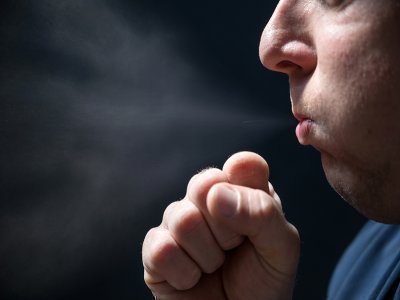COVID Safe Ventilation For Your Workplace
There is growing scientific acceptance by the WHO and others that COVID-19 transmission is much more airborne than previously thought. Ventilation systems are key to the prevention of transmission of pollutants and recent research indicates that COVID-19, transmitted in aerosols from infected persons, is susceptible to control by ventilation.
Measuring the quantity of a virus in the air is problematic due to expense, the absence of any direct measuring methods and the reliability of the measurement. Carbon dioxide (CO2) which is accurately, easily and directly measured in real time, provides an excellent marker for exhaled air. Long used in Indoor Air Quality (IAQ) assessments, it is now becoming a mainstream measure for COVID safe ventilation.
CO2, the gas we humans exhale at a concentration of 35,000 to 50,000 parts per million (ppm), about 100 times higher than that found in fresh air, has been used for many years as a measure of ventilation systems efficiency. In buildings with no significant CO2 sources other than humans, CO2 levels reflect occupancy levels and the quantity of fresh air and mixing provided by the ventilation system.
Unlike its toxic sibling CO with an exposure standard of 30ppm, CO2 has a 5,000 ppm workplace exposure standard and fluctuations in poorly and well ventilated spaces can be measured well within this level.
CO2 measurements must be used with caution in predicting COVID-19 infection risk:
- The exact time and conditions under which COVID-19 can remain airborne in aerosols is not known with certainty
- Infectiousness varies with variants and airborne viral load which is significantly affected by activities such as talking, singing, shouting and exercise. Physical activity has always been a factor in exposure to any inhalable toxic agent: the more you breathe the more you potentially inhale.
- With COVID-19, the more you breathe the more virus you exhale as well. Mathematical modelling puts sharing a room with an infectious lecturer at 100 times as risky as sharing the same room with an infectious student at the same CO2 level . This assumes students talk much less and less forcefully than lecturers (probably based on STEM classes) and provides clear motivation for reducing the lecturer hot air to useful information ratio.
The risk assessment mix must include frequency and duration of exposure and other factors such as recycling air filters, susceptible populations and the last line of defence - respiratory protection. Modelling including all these factors has been undertaken with algorithms designed to provide estimates of risk across a wide variety of workplace scenarios1.
Given what we do know about COVID-19 we should take measures to ensure the risk of transmission through air is reduced as far as practicable. Transmission is more likely in poorly ventilated, small areas with high occupancy levels such as offices, lunch rooms and toilets, where aerosols can be generated during flushing.
Where these areas have no ventilation or are ventilated with a split system (which normally recirculates room air with minimal filtration) the risk of airborne transmission is increased. Respiratory Protective Equipment (RPE) will reduce airborne transmission. However, RPE, the lowest form of control in the regulatory hierarchy, cannot be worn while eating and probably won’t be worn in the shower or amenities block.
How To Manage Airborne COVID In Your Workplace
The regulatory control hierarchy applies for all occupational health risks. The hierarchy for managing COVID-19 could be:
Elimination: of workers from the common workplace (working from home or in shifts)
Substitution: of common group facilities to outdoor tea/coffee bars
Isolation: separation of workers from the same air and surfaces through physical distancing in different air spaces
Engineering: increase ventilation rates in buildings including reducing recirculation
Administration: provide information, instruction and training to workers e.g. COVID-19 facts
PPE: consider if it is practicable in your workplace to wear P1 or P2 masks (workers should be fit tested)
Indoor Air Quality
As a leading workplace consultancy for over 35 years, JTA is experienced at conducting indoor air quality testing. We know that indoor air quality could have serious implications for the comfort, health and productivity of your workforce. The airborne issues of COVID have now highlighted the importance of indoor air quality and ventilation in your workplace. We have fully qualified and experienced Indoor Environmental Professionals who’ll provide advice on the long term management of your indoor air quality. Read More
Reference
1 Exhaled CO2 as a COVID-19 Infection Risk Proxy for Different Indoor Environments and Activities, Zhe Peng and Jose L. Jimenez*, Cite This: Environ. Sci. Technol. Lett. 2021, 8, 392−397









